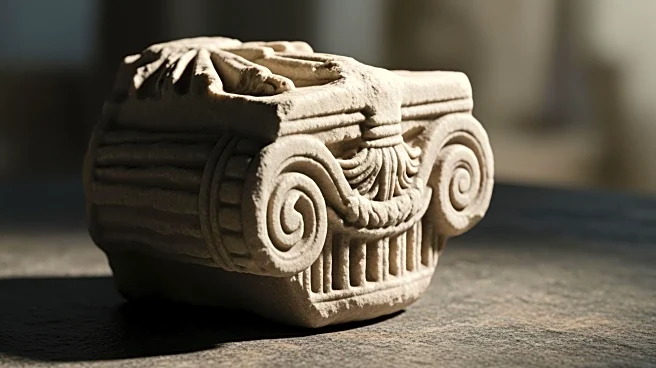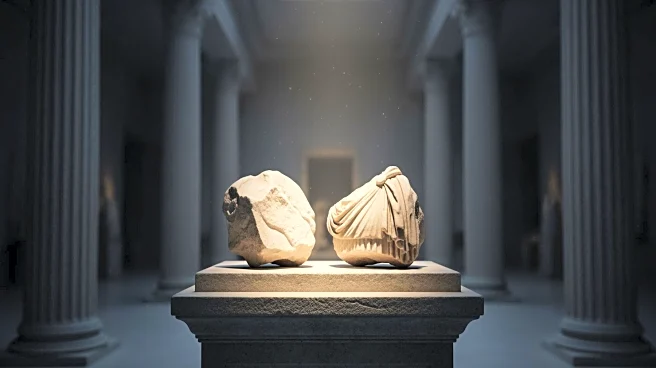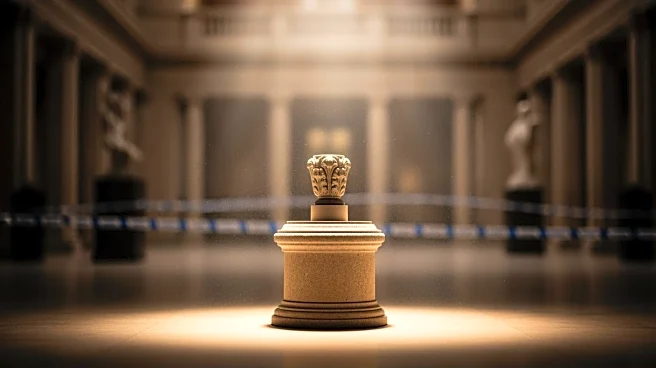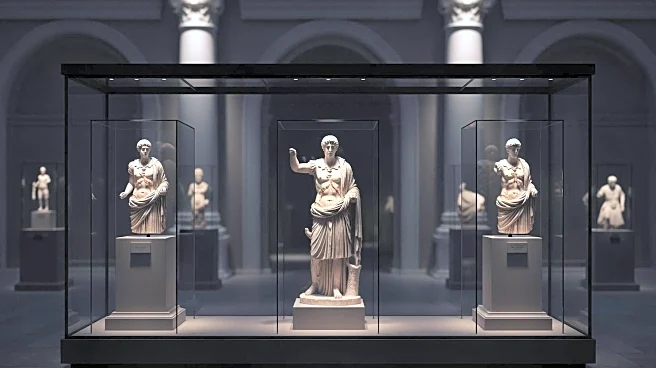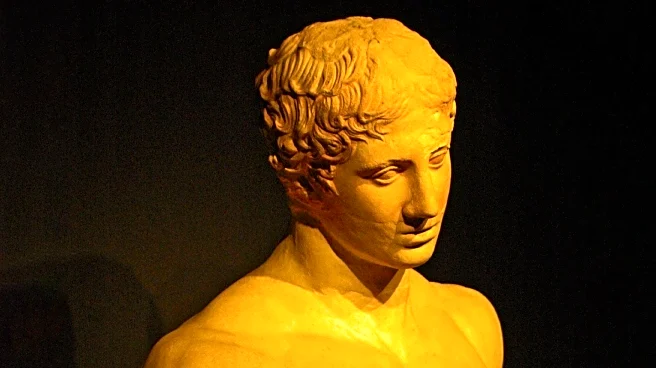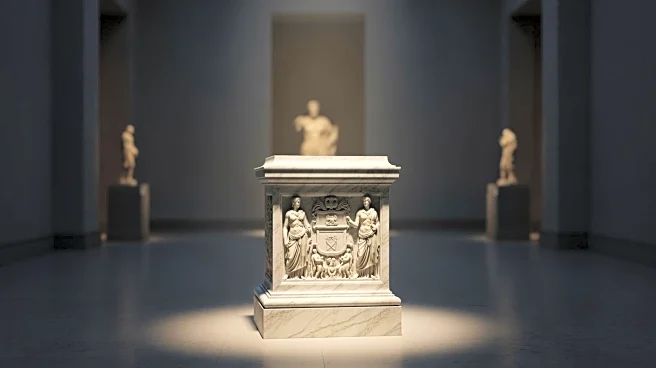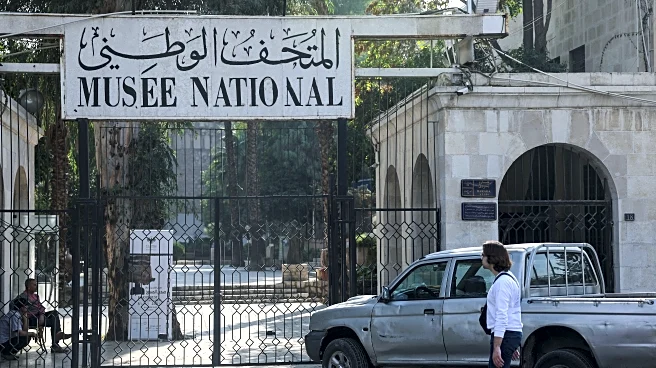What's Happening?
The Syrian Ministry of Culture recently faced criticism after issuing and then deleting a statement regarding the theft of Roman-era statues from the Damascus National Museum. The theft, which occurred
earlier this week, involved six statues of the goddess Venus and several gold ingots. The Directorate General of Antiquities and Museums (DGAM) and the Ministry of Culture confirmed the theft and launched an investigation, but have been criticized for their lack of transparency. Images of the stolen statues were briefly posted by the ministry, appealing for public information, but were removed shortly after. The theft has raised questions about the motives behind targeting these specific statues, with suggestions of a symbolic attack or internal involvement.
Why It's Important?
The theft of these Roman-era statues is significant as it highlights ongoing security concerns at cultural institutions in Syria, particularly in a region affected by conflict. The incident underscores the vulnerability of cultural heritage sites and the challenges in protecting them. The stolen items, being well-documented and famous, cannot be easily sold on the black market, suggesting that the theft may have been motivated by ideological reasons rather than financial gain. This raises concerns about the potential targeting of cultural symbols by extremist groups. The lack of transparency from Syrian authorities further complicates efforts to recover the stolen artefacts and protect other cultural sites.
What's Next?
The investigation into the theft is ongoing, with security forces interviewing museum staff and advising them not to speak publicly about the incident. The United Nations body Unesco has noted serious deficiencies in the museum's security provisions and is supporting efforts to enhance protection measures. The Ministry of Culture's cautious approach to sharing information may hinder recovery efforts, but experts remain hopeful that the stolen items will be found. The incident may prompt further scrutiny of security measures at cultural institutions in Syria and potentially lead to increased international support for safeguarding cultural heritage.
Beyond the Headlines
The theft of the Roman statues may have deeper implications beyond the immediate loss of cultural artefacts. It highlights the ethical and cultural challenges in preserving heritage in conflict zones, where artefacts can become targets for ideological attacks. The incident also raises questions about the role of international organizations in supporting local efforts to protect cultural heritage. The lack of transparency from Syrian authorities may affect international trust and cooperation in future preservation initiatives.
